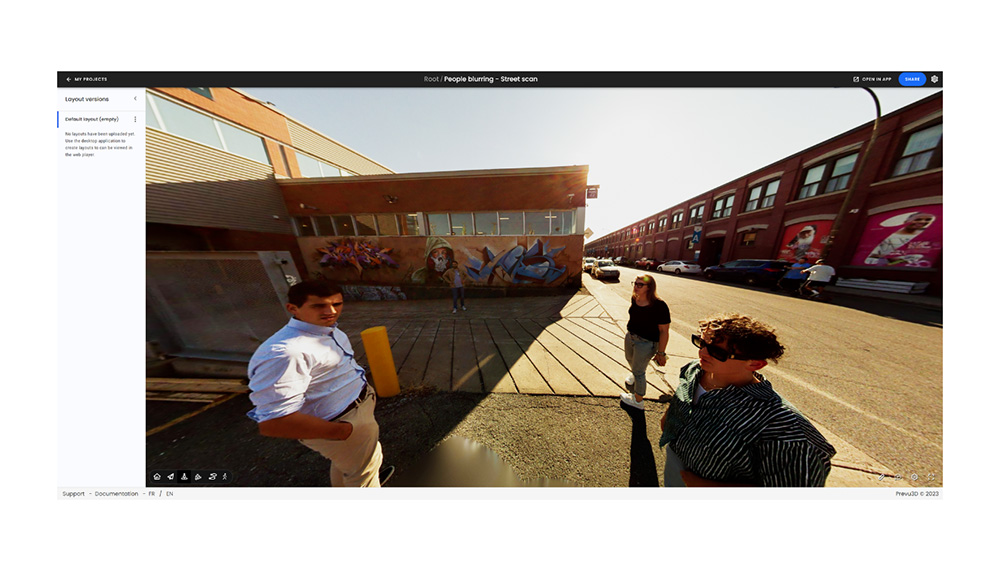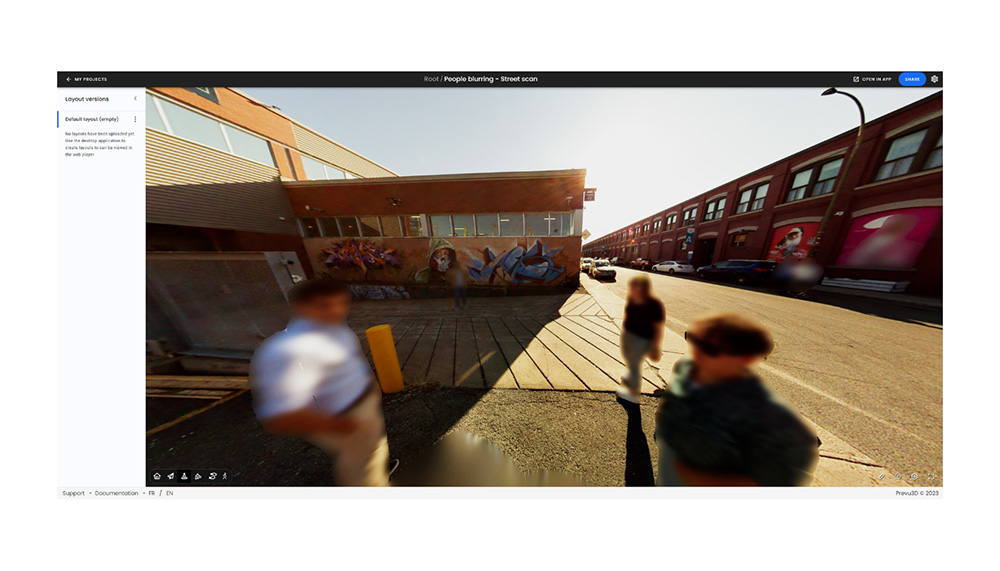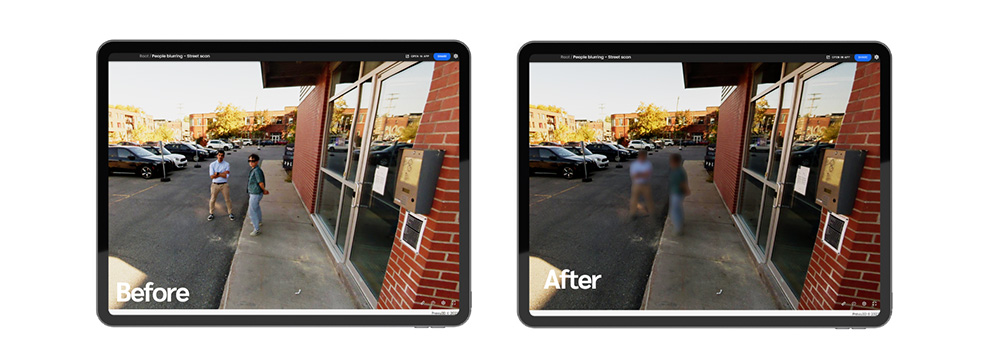November 9, 2023 – Elle Magni
Prevu3D’s integrated blurring: securing personal data and GDPR compliance
Data anonymization is crucial in today’s technology-driven world, especially as 3D scanning becomes standard practice across industries, increasing the risk of capturing personally identifiable information.
For laser scanning professionals and enterprises, integrating face blurring is essential to protect personal information and comply with the General Data Protection Regulation (GDPR).
Even when a legal basis is established for processing personal data, the GDPR requires companies to balance the risk to the data subjects’ privacy and liberties with the use of the data. The blurring of faces plays an important role in minimizing the risk to the privacy of data subjects. Furthermore, anonymized data is also not regulated by the GDPR, which enables a more liberal use of the data and reduces the risk of penalties that a company could receive in case of a GDPR violation.
Meta Platforms faced severe consequences for data protection compliance in May 2023. The company was fined a staggering 1.2 billion euros by the Data Protection Commission in Ireland due to inadequate data transfers to the US. This case highlights the importance and severity of strict data protection measures to avoid costly penalties and protect user privacy.
Quick overview of the GDPR
Previously, personal data protection lacked standardization across EU member states, resulting in inconsistent practices and challenges for cross-border operations. Recognizing the need for clarity and consistency, it became evident that specific data protection standards should be established regardless of location.
To address these issues, the EU implemented the GDPR, effective on May 25, 2018. This regulation replaced the Data Protection Directive and protects all data subjects within EU member countries without requiring national legislation.
Before GDPR, data breaches faced minimal penalties and lacked accountability. However, GDPR has brought about significant changes, empowering regulators to impose substantial fines on businesses even beyond the EU. Countries with privacy laws that are judged adequate by the European Commission benefit from easier international data transfers, which encourages countries external to the EU to match the GDPR with their own legislation. As of now, countries such as Canada, Japan, the United Kingdom and the US (for commercial organizations participating in the EU-US Data Privacy Framework) have received an adequacy decision from the European Commission.
Protecting personal data by blurring
Personal data protection is paramount when using digital twin software, and data anonymization is crucial in achieving this. However, limiting the types of data captured may not always be enough, as unintentional capture of personal data remains a concern. Even when the personal data was captured with legal basis, the data is still subject to regulation and is therefore within the control of the data subject. For example, the data subject that appears in the captured images may require you to send a copy of the data or to remove the data using a Data Subject Access Request (DSAR). It may also be difficult to legally share the captured personally identifiable images with parties that reside outside of the EU.
Anonymizing data involves distorting or altering it to become unidentifiable and irrecoverable. Blurring is the most commonly used method for anonymizing scanning data from mobile and terrestrial devices. By changing pixel colors in areas where people can be identified in pictures and 3D models, malicious actors find data impossible to relate to an individual. Once the data is anonymized by blurring, it becomes out-of-scope from certain personal data regulations, significantly reducing the likelihood of fines in the event of a breach of privacy. The lack of personally identifiable data also simplifies the sharing and processing of the captured data since less regulations have to be followed.
Prevu3D integrated face blurring feature
We’re excited to share that we have integrated an automated blurring functionality in our cloud processing engine. While manual blurring options may exist, automated blurring solutions integrated into our processing software are the way forward.
Anonymization of personal data simplifies the sharing and processing of said data. The anonymization process would be manual and time-consuming in a product without automation. The user would need to manually edit the pictures which are contained in the captured data. Prevu3D offers quick automated anonymization of data, which saves a lot of time and guarantees compliance with GDPR and other privacy regulations.

Before processing the captured data

After Prevu3D automated blurring functionality
Our integrated blurring functionality addresses the pain points of 3D scanning service providers (LSPs) and enterprises, streamlining the process and moving closer to GDPR compliance. With Prevu3D software, laser scanning professionals can easily import, blur, and clean up scans, exporting a comprehensive RCP file. This efficient process saves time and resources, as even less experienced employees can handle the task, eliminating the need for specialized expertise required by traditional point cloud tools.

The advantages of this integrated solution are significant:
- All your data in one place; our integrated solution enhances safety and efficiency.
- With just a single click, our software saves valuable time by swiftly applying blurring to the necessary elements.
- Our integrated blurring functionality ensures automated compliance with GDPR, giving you peace of mind.
At Prevu3D, we prioritize incorporating GDPR compliance within our software to ensure our users can satisfy legal and ethical requirements concerning personal data. This minimizes risks and instills trust in customers and stakeholders who entrust their sensitive data to Prevu3D software.
Our commitment to security
Prevu3D prioritizes the security, privacy, and availability of our customers’ data, as demonstrated by our adherence to industry-leading enterprise-grade security, privacy, and availability certifications. These certifications, such as SOC 2 Type II and CyberSecure Canada compliance, highlight our commitment to transparency and providing the highest level of service. Our Cloud Platform is protected by many layers of security controls such as penetration testing, network segregation, data encryption, intrusion detection, firewall implementation, and vulnerability scanning to ensure data protection.
For more information on our security program and certifications, visit our Security page.
Prevu3D software provides an end-to-end platform that enables industries to harness the potential of 3D, enabling efficient workflows, enhanced decision-making, and optimized resource allocation.
